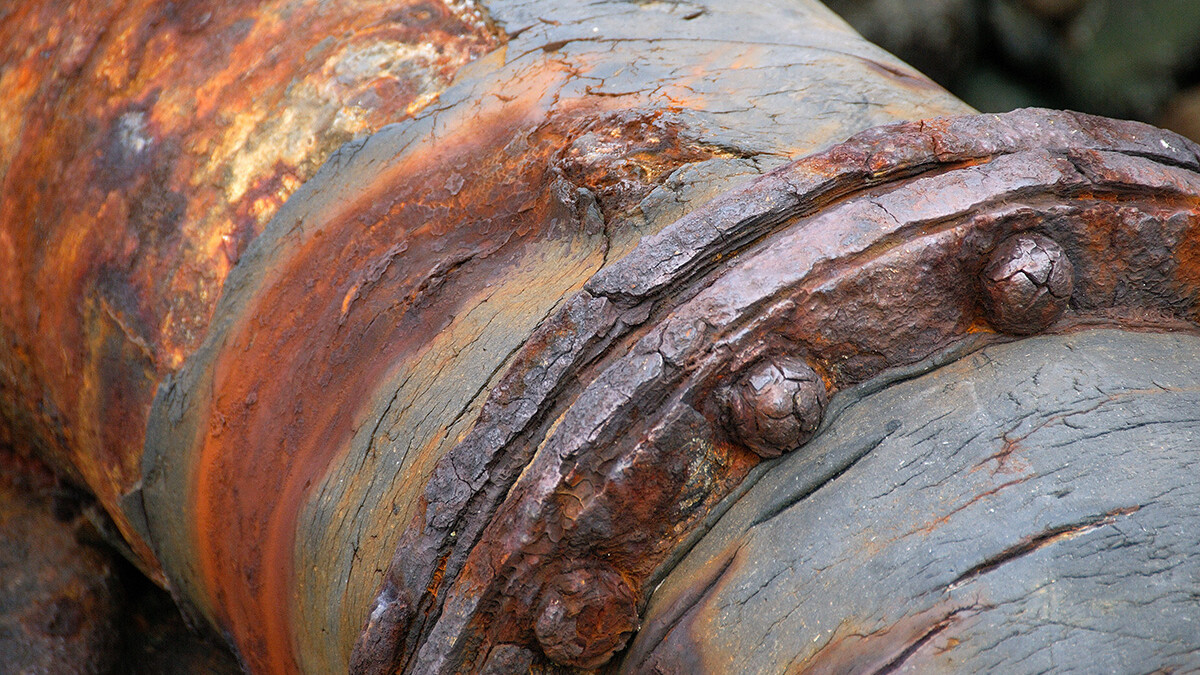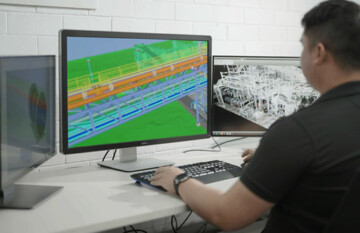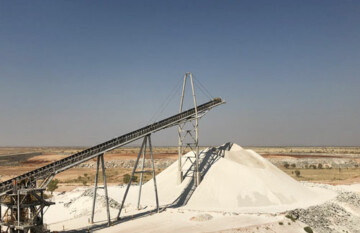Corrosion is the number one cause of slurry pipeline failure. Despite this, we often see design mistakes that create the perfect corrosive environment.
It’s easy to understand why. When you’re under pressure to get a pipeline up and running, often you’ll go with what you know rather than something that will work better in the long run.
In our experience, these are the seven biggest sins in slurry pipeline corrosion. Once you know what to look out for – and how to avoid it – you’ll stop corrosion before it starts.
1. Increasing pipeline thickness
General corrosion is the most common type of corrosion. Corrosive elements – such as flotation or leaching reagents – are common culprits that uniformly eat away the pipe wall.
This can be seen in this bauxite tailings pipeline (see below). Corrosion has eaten the unlined steel piping from the inside out, causing the pipeline to fail.
To overcome this, design engineers will specify a thicker pipe wall to allow for general corrosion – a gradual reduction in the wall thickness.
You might get a slightly longer wear life, but the pipeline will still ultimately fail.
And probably well before it should.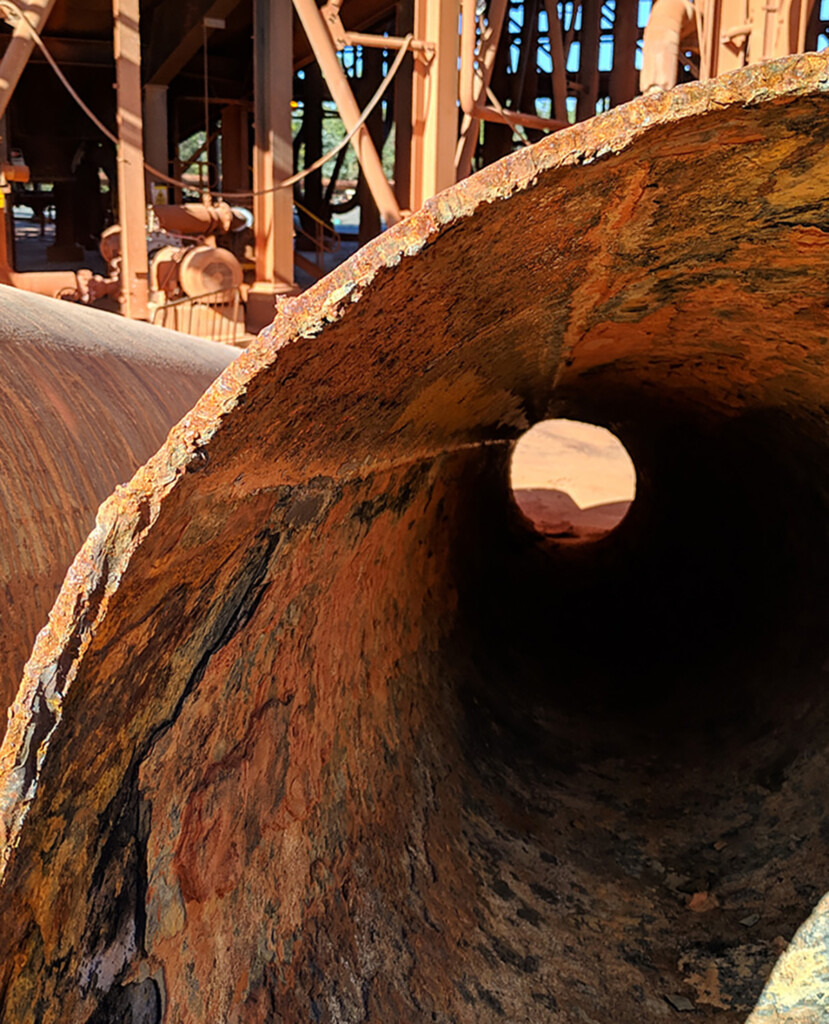
Do this instead:
Instead of bare steel, use lined piping. It creates a barrier between the corrosive slurry fluid and the steel piping and significantly extends the life of your slurry pipeline.
We’ve put together this article on different pipeline options and how they stack up from a wear and cost perspective.
2. Mixing your slurry pipeline metals
Like water and oil, some metals don’t mix well together.
Galvanic corrosion occurs when two dissimilar metals or alloys come into contact in the presence of an electrolyte, such as tailings or water.
It causes a chemical reaction that eats away at the connection point, leading to leaks and blowouts.
Do this instead:
It’s simple – stop incompatible metals from touching. Here’s how:
- Lined piping: if you’re already using lined piping, specify for the liner to go over the end of the flanges, creating a buffer between the different metal types.
- Sacrificial gaskets and sleeves: if there’s no way around two dissimilar metal types abutting use sacrificial gaskets and bolt sleeves. It’s much cheaper and easier than replacing pipeline spools or corroded valves.
- Cathodic protection: galvanised piping or a current cathodic protection system will help mitigate corrosion. Keep in mind, these can have varying degrees of performance.
- Mining hose: use expansion joints or larger sections of flexible mining hose to separate the two dissimilar metals.
One of our customers – a gold mine in Egypt – was battling galvanic corrosion on their raw water supply pipeline. The contact between the stainless-steel valves and the carbon steel piping created the perfect environment for blowouts and leaks.
So, they used a combination of Mylar sleeves, sacrificial gaskets, and expansion joints to stop the two metals from touching (see below).
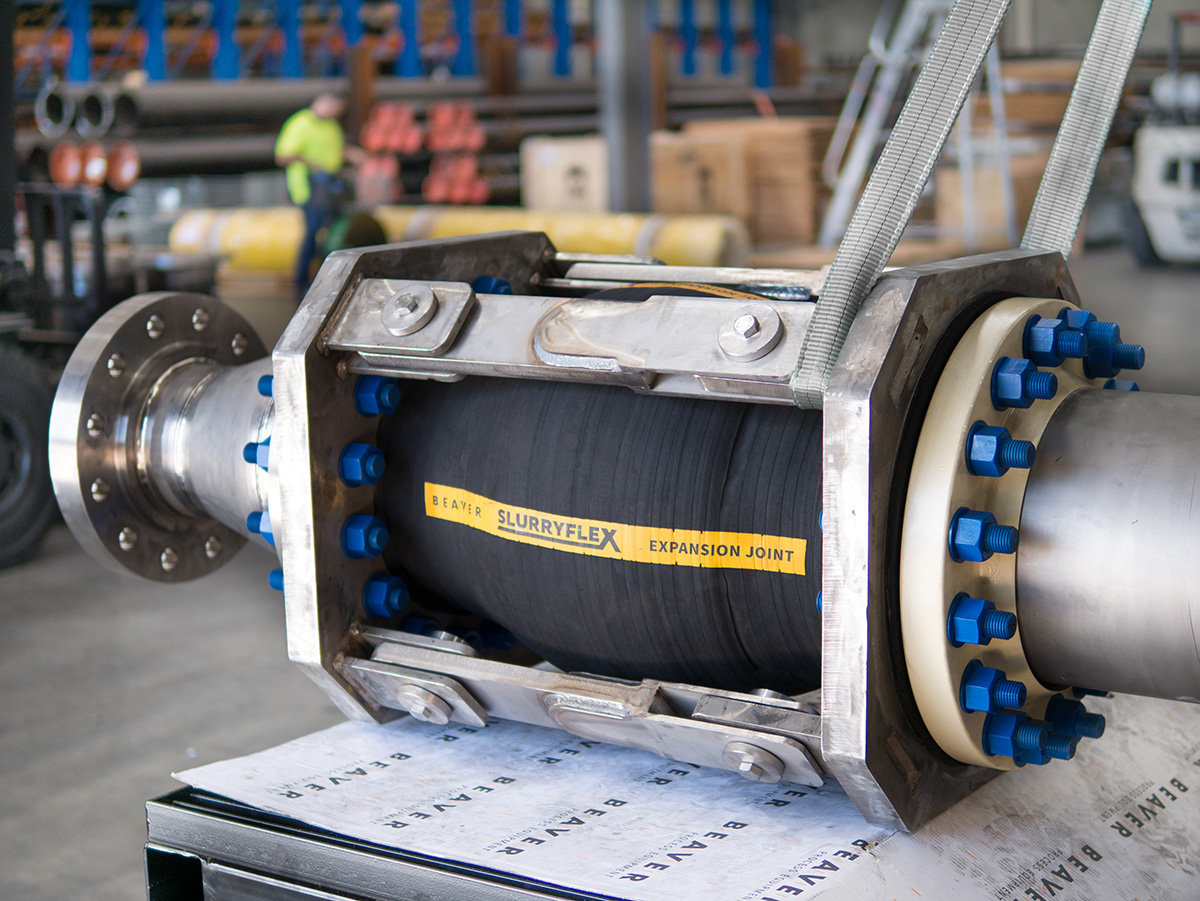
3. Ignoring greedy erosion-corrosion
As corrosion builds in a slurry pipeline, the fluid erodes and swipes the corroded crust and exposes the steel underneath. The corrosion then eats away at the steel substrate (see diagram below).
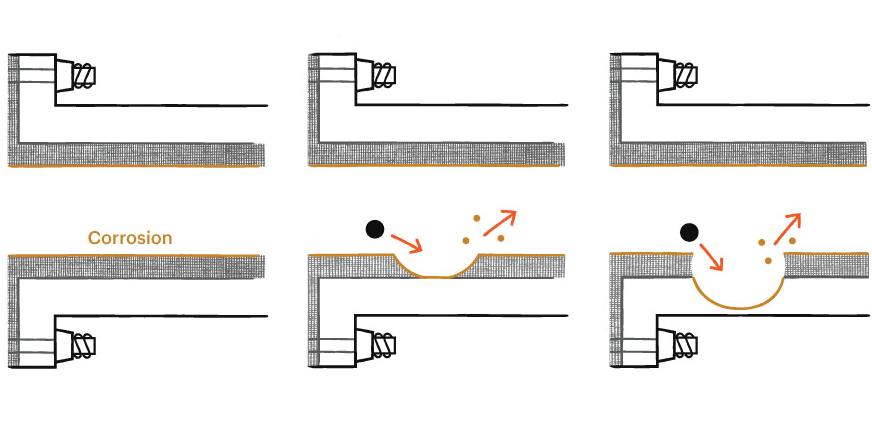
Do this instead:
Unlined pipelines are particularly susceptible to erosion corrosion.
Use polyurethane-lined steel in abrasive slurry systems where corrosive elements are present. That way, you get both erosion and corrosion protection.
4. Poor piping design
Dissolved oxygen? Reagents? Chlorides? That’s a perfect pitting corrosion environment.
Cavities or pits form in localised areas of the liner, exposing the substrate underneath. This type of corrosion creates stress points that undermines the structural integrity of the pipeline.
Low lying spots, tight bends and crevices should be avoided. That’s why getting the design right is so important.
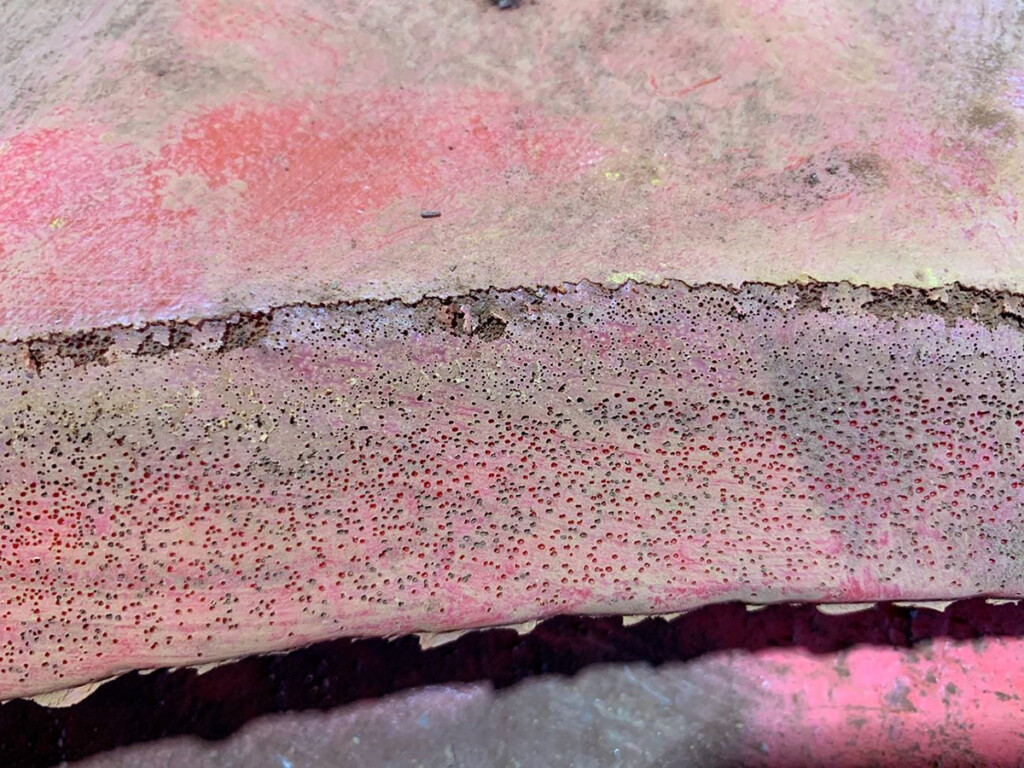
Do this instead:
At the design stage, remove sharp bends or stagnant areas where corrosive substances can accumulate.
Lined piping and cathodic protection will also help mitigate pitting corrosion and extend the life of your pipeline.
5. Not knowing your fluid
What is really lurking in your pipeline?
Microbiologically influenced corrosion (MIC) is where bacteria, fungi, or algae colonise in pipelines and produce corrosive by-products. It’s most prevalent in organic minerals (such as coal), raw water pipelines or sulphide processing.
The corrosion will appear in localised spots where slurry often gets trapped, such as flanges and valves. You will be able to spot this as built up slime deposits.
The pH and chemical environment and operating conditions have a big impact on MIC. Acidic or alkaline slurry conditions favour specific types of microorganisms. If there’s stagnant areas or low flow velocity, it’s a perfect breeding ground for micro-organisms to thrive.
Do this instead:
You need to use lined pipe if MIC is likely to be an issue. With abrasive slurries you’ll need a liner that is both resistant to wear and microbiological influence, such as polyurethane.
In combination with biocides treatments, this ensures the pipeline will last the life of the mine.
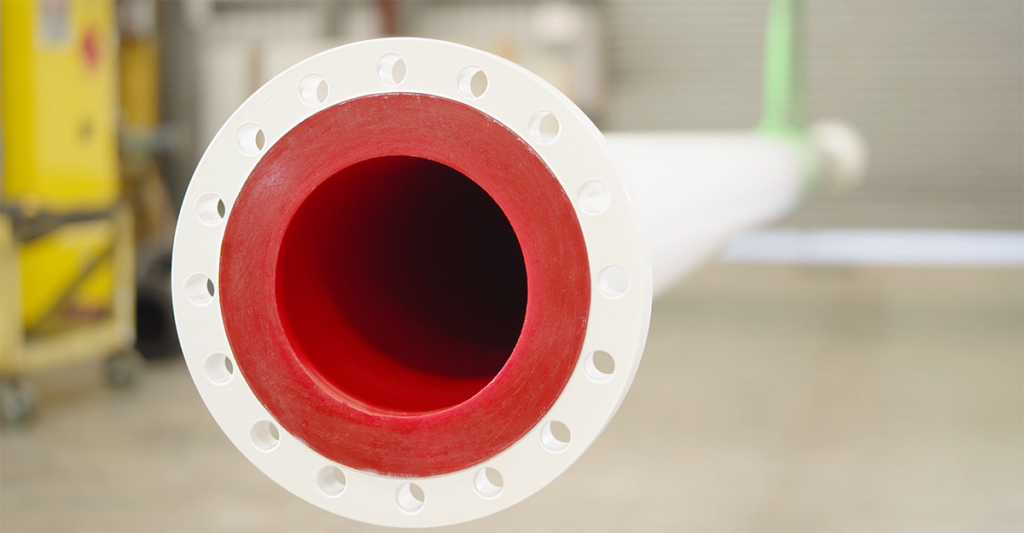
6. Creating nooks and crannies
Crevice corrosion occurs in areas where there are localized gaps, crevices, or seal welds on the pipeline surface.
Like pitting corrosion, these crevices provide the ideal environment for corrosion to thrive.
Material type (metal and non-metals), geometry, metal type and environmental conditions (pH, temperature, oxygen) also influence the effect of crevice corrosion.
Do this instead:
Minimise seal welds, correctly bore match piping and instruments to the same ID and ensure seamless connections between spools and piping (see diagram below).
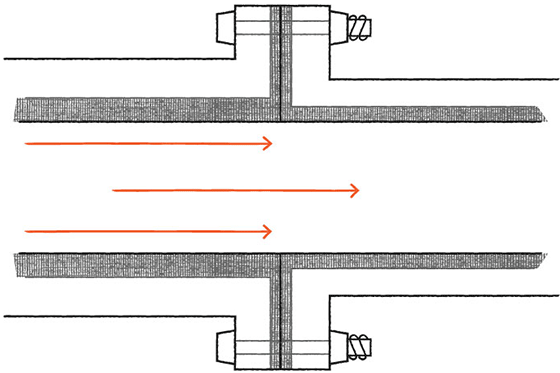
7. Slothful maintenance or inspection
Corrosive slurry + unchecked mechanical stress = stress corrosion.
Stress corrosion is the perfect wear storm. Mechanical stress in a pipeline (ie internal pressure, thermal stress, external loads) combined with corrosive slurry leads to stress corrosion.
It starts in places where there are stress concentrations, such as welds, fittings, or bends. From the exterior of the pipeline cracks form. Left unchecked this will lead to a catastrophic failure.
Do this instead:
Stay on top of inspection and maintenance. Regularly inspect the pipeline for signs of corrosion and carry out maintenance or repairs to prevent the progression of cracks and potential failure.
Stop corrosion before it starts
Don’t let corrosion become your pipeline’s downfall.
Understanding the difference types of corrosion – and what causes it – will help you avoid creating corrosion hotspots.
Using liner technology, refining your design, knowing your slurry, and keeping up regular inspections will ensure you have a well-designed pipeline that is built to last.

Get practical recommendations for your pipeline
Reach out to setup a call with a pipeline specialist. We'll give you clear recommendations and advice to help you with your piping specification, so you can confidently design a pipeline that lasts.
"*" indicates required fields








